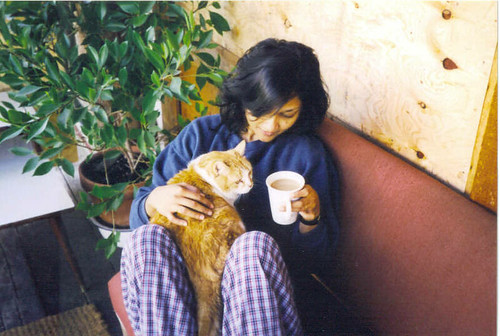Blink by Gladwell
 Blink: The Power of Thinking Without Thinking
Blink: The Power of Thinking Without Thinking by Malcolm Gladwell
Have you ever made instinctive decisions to find out that it was the right one, despite your careful analysis later on warning you that you might have gambled a bit on the wrong side?
Blink, by Malcolm Gladwell, hypothesizes that the instant or snap judgments we make without elaborate deliberations are often just as good or better than the decisions we arrive at after careful reasoning.
And, the book sets out to prove this across various scenarios ranging from art museums, emergency rooms, and psychology laboratories clinging on to what the author terms Rapid Cognition.
Rapid cognition represents a snap decision-making process that our minds are capable of without consciously worrying about how we arrive at those decisions in any logical way. It can often be faster and more reliable than what the logical part of the brain manages.
At the onset, Gladwell sets up the expectation for the reader:
- to convince the reader that these snap judgments can be as good or better than reasoned conclusions
- to discover where and when rapid cognition proves a poor strategy
- to examine how the rapid cognition's results can be improved
Gladwell collects anecdotes, statistics, and some conjectures to persuasively convince the reader of these three tasks. However, I came out of this book rather skeptical, not entirely awed by the presentation.
Non-fiction books by renowned authorities in the field (ex: The Selfish Gene by Richard Dawkins) are a treat to read as they stimulate and satisfy. Some others, often by renowned journalists and columnists, (ex: World is Flat by Thomas Friedman) turn out to be pumped with hot air and very little substantiation.
As a renowned journalist for the New Yorker, Gladwell's Tipping Point was well-received. So, on a whim, I borrowed this from my library eager to assimilate a new theory. After all, I have always been interested in knowing more about the human decision-making process, especially what we call instant or instinctive decisions. However, the meandering and chatty style of this book made it difficult for me to keep up the enthusiasm.
It is a short book, about 250 pages, potentially an easy read. But, the ideas and examples presented were such that it constantly sparked the wait a minute, this cannot be right... attitude, urging me to readily conceive counter-examples and pick out a weakness in the argument.
Early in the book, there is an example of psychologists analyzing a mere 15-minute video of married couples engaged in a casual conversation and predicting (to about 95% accuracy) whether the couple will remain married after 15 years. I could not help roll my eyes at the naiveté. The terms "happy" and "married" are not well qualified in that example, and a happy marriage can have its down days, and not all unhappy marriages end in a divorce, so the presumption appalled me.
Another example where perfect strangers are sent into dorm rooms of unsuspecting college students and asked to draw up snap judgments about the occupant's characteristics seems oversimplified as well. You can drop in on my house unexpectedly and conclude that I am lackadaisical wastrel with poor hygiene. And you would be so terribly wrong. You just caught me on my migraine day. In this case, the rapid cognition seems like a poor strategy to rely on.
The example about Cook County Hospital's ED chief revolutionizing the diagnosis of ER patients with chest pain would have made an interesting read if rambling text was not such a distraction.
However, the book starts with a lot of promise with the episode surrounding the authenticity of a particular statue: One set of experts do a thorough analysis, subject the statue to rigorous tests, and conclude that it is a genuine piece. However, a second set of experts just look at it and instinctively believe it to be a forgery. And the second group is right! So, what happened? Why did all the carefully accumulated evidence not throw the second group off? How did the second group know that it was a forgery by just looking?
Thin-slicing is the term used over and over in this book, where we subconsciously and possibly ruthlessly prune information to the point where our decision-making is not overwhelmed or even paralyzed by information overload.
I do believe in the theory that our brains are constantly processing information and what we call instinct sometimes is carefully cultivated set of decisions based on centuries of accumulated knowledge programmed into us for our survival.
Bottom Line: It is an interesting read, but, didn't leave me awed or even convinced of the ideas explored.
Labels: book review, non-fiction


0 Comments:
Post a Comment
<< Home